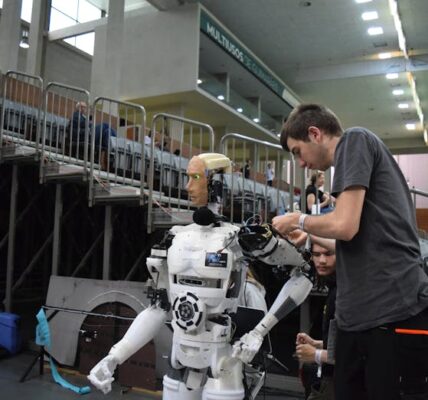Scale AI Prompt Engineering: Your Ultimate Guide
Understanding the nuances of Scale AI Prompt Engineering is essential for leveraging AI’s full potential in automated systems. As businesses increasingly rely on artificial intelligence to process large datasets and generate insights, the role of a prompt engineer becomes pivotal. This guide will delve into the intricacies of prompt engineering within Scale AI environments, offering valuable insights and practical advice.
What is Scale AI Prompt Engineering?
Prompt engineering is the skillful craft of designing inputs and instructions that effectively communicate with AI models to elicit the desired output. In the context of Scale AI, a platform known for its data annotation and categorization capabilities, prompt engineering ensures that AI models are fed with high-quality, well-structured prompts. This leads to more accurate and useful AI-generated content or decisions.
The Importance of Effective Prompts
Creating precise and clear prompts is crucial because even the most advanced AI models can falter if the input they receive is ambiguous or misdirected. Scale AI’s platform thrives on well-defined prompts that guide the AI towards performing tasks such as image recognition, natural language processing, or any other form of data analysis with higher efficiency.
How to Become a Proficient Prompt Engineer
The journey to becoming a proficient prompt engineer involves understanding the AI’s language model, mastering the art of instruction design, and staying updated with the latest advancements in AI technology.
Understanding AI Language Models
To communicate effectively with AI, one must first understand the underlying language model it uses. This includes grasping the syntax, semantics, and pragmatic aspects that AI models interpret. Familiarity with these components allows prompt engineers to craft inputs that align with the model’s processing capabilities.
Crafting Clear and Concise Prompts
A critical aspect of prompt engineering is the ability to distill complex instructions into clear and concise prompts. This often involves breaking down a task into smaller, manageable components and translating them into language that the AI can process without confusion.
Iterative Testing and Refinement
Effective prompt engineering is an iterative process. It requires testing prompts, analyzing the output, and refining the instructions based on the results. This cycle helps in fine-tuning the prompts for better performance and accuracy.
Best Practices in Scale AI Prompt Engineering
Adhering to best practices in prompt engineering can significantly enhance the quality of AI-generated results. The following are some strategies to consider:
- Use Specificity: Be as specific as possible with your prompts to avoid ambiguity.
- Context Matters: Provide context where necessary to give the AI a better understanding of the task.
- Be Concise: Avoid overly complex or verbose instructions that could confuse the AI.
- Consistency is Key: Maintain a consistent structure and format in your prompts to facilitate better AI learning and performance.
Training and Continuous Learning
As AI models evolve, prompt engineers must also update their skills. Participation in training programs, workshops, and hands-on projects can keep prompt engineers at the forefront of this dynamic field.
In conclusion, the mastery of Scale AI Prompt Engineering is an indispensable asset for businesses and individuals looking to optimize AI interactions. By adhering to the principles and practices outlined in this guide, prompt engineers can significantly contribute to the efficiency and effectiveness of AI systems.







